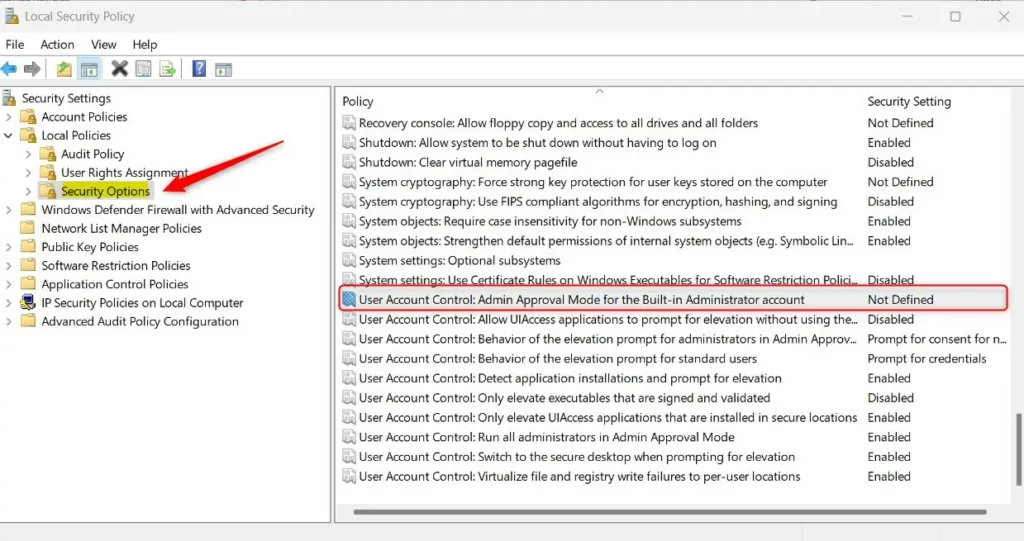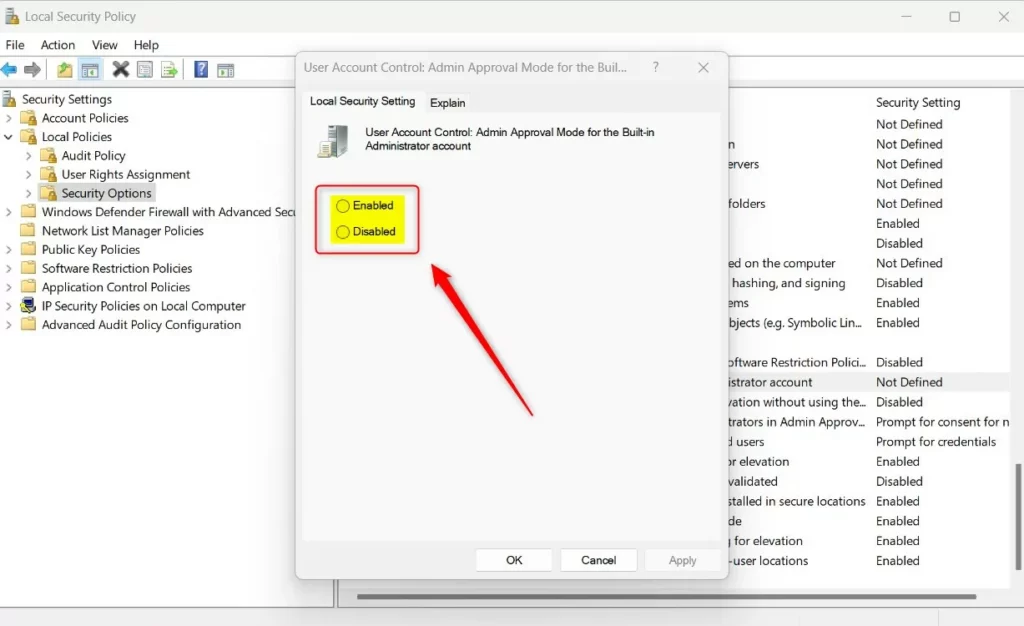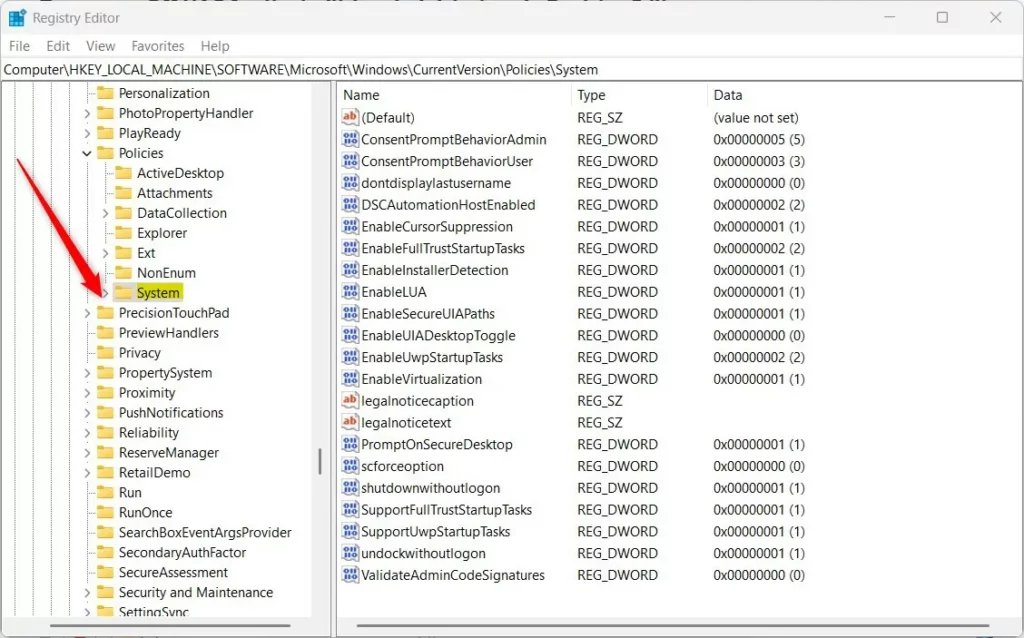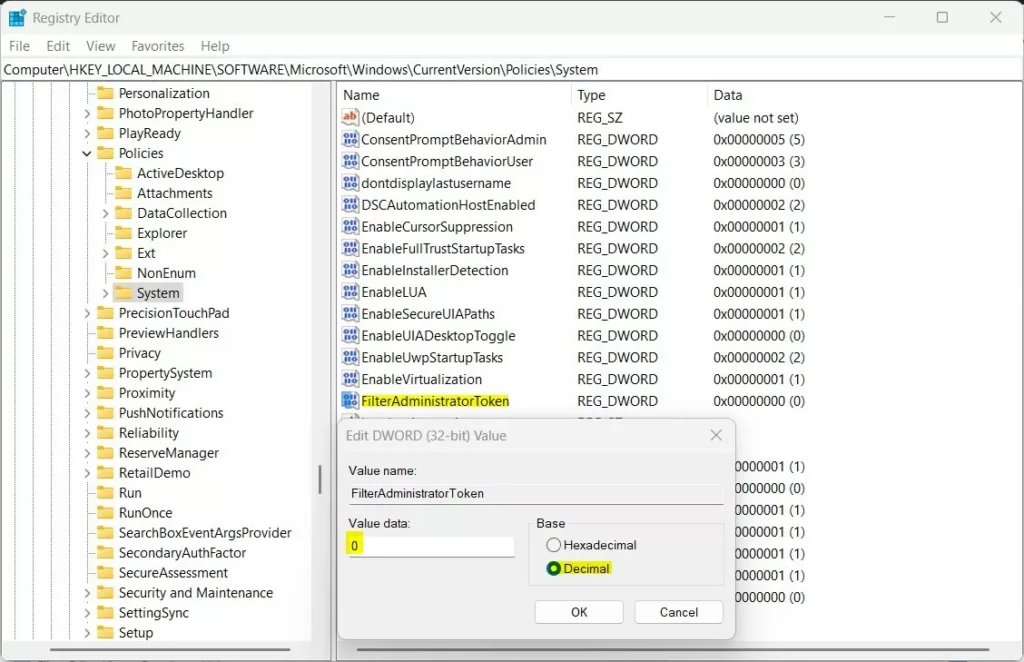This article explains how to enable or disable User Account Control (UAC) for the built-in administrator account in Windows 11.
All Windows 11 computers come with a hidden built-in administrator account. This account is disabled by default.
Users can enable the built-in administrator account and log in with it. With this account, you sign in with elevated rights without needing to Run as administrator or prompt for UAC approval.
Using the built-in administrator account to manage your system can be dangerous. In most cases, you won’t get to confirm that you want to execute specific tasks before executing, even if the commands would damage the system.
Here’s how to enable or disable UAC for the built-in administrator account, so you don’t make unintended errors.
Enable or Disable UAC for Built-in Administrator in Local Security Policy
As described above, using the built-in administrator account to manage your system without some safeguards can be dangerous.
Here’s how to add safeguards to prevent errors.
First, open the Local Security Policy Editor (secpol.msc).
Expand the Local Policies -> Security Options sub-section when the Local Security Policy Editor opens.
On the right pane, select and double-click the “User Account Control: Admin Approval Mode for the Built-in Administrator account” policy.

When the setting window opens, choose to enable or disable UAC for the built-in administrator account.

Close and exit the Local Security Policy Editor when you are done.
Turn on or Off UAC for the built-in administrator via Registry Editor
Another way you can enable or disable UAC for the built-in administrator is to use the Windows Registry Editor.
First, open the Windows Registry, and navigate to the folder key path below.
HKEY_LOCAL_MACHINE\SOFTWARE\Microsoft\Windows\CurrentVersion\Policies\System
If you don’t see the System folder key, right-click on the Policies key, then create the subkey (System) folders.

Right-click the System folder key’s right pane and select New -> DWORD (32-bit) Value. Next, type a new item named FilterAdministratorToken.
Double-click the new item you created (FilterAdministratorToken) and make sure the Base option is Decimal, and then update the Value data:
- To turn this feature on. Type 1.
- To turn this feature off. Type 0.

Save your changes and restart your computer.
That should do it!
Conclusion:
- Enabling the built-in administrator account in Windows 11 provides elevated rights without the need to run as an administrator or prompt for UAC approval.
- However, using the built-in administrator account to manage the system can be risky due to the lack of safeguards for executing potentially damaging commands.
- To prevent unintended errors, users can enable or disable UAC for the built-in administrator account using the Local Security Policy Editor or the Windows Registry Editor.
- After making the changes, it is essential to restart the computer for the adjustments to take effect.

Leave a Reply